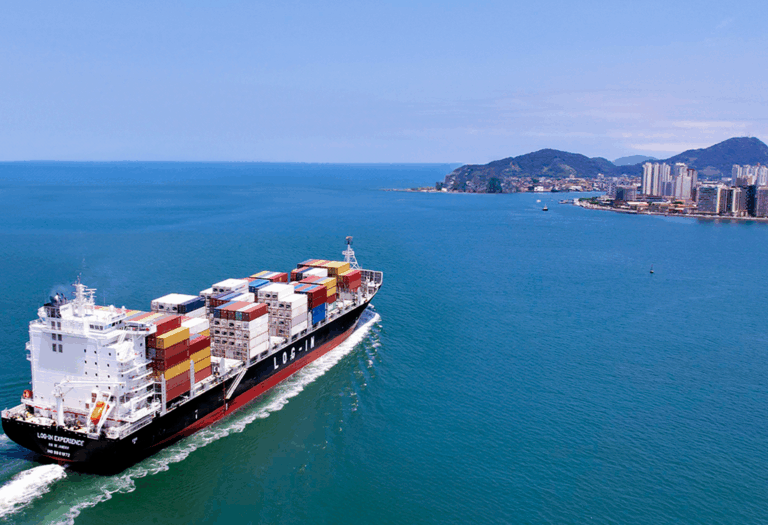The year 2024 has proven to be promising for the logistics sector, which finds itself immersed in a dynamic and challenging landscape driven by constant technological evolution and a growing focus on sustainable practices. In this scenario, companies are increasingly adopting advanced technological solutions to lead their logistics operations, address challenges, and explore innovative opportunities.
Throughout this text, we highlight some of the technological trends that are revolutionizing the logistics sector:
Artificial Intelligence (AI) is reshaping logistics by offering innovative solutions for demand forecasting, route optimization, and efficient warehouse and transportation management. Its ability to analyze vast volumes of data and learn from patterns contributes to more agile and precise decision-making, an essential element in meeting the dynamic demands of the logistics sector. Furthermore, when integrated with various optimization systems, AI emerges as a transformative catalyst in logistics, significantly enhancing operational effectiveness and outlining a new contemporary landscape.
Warehouse Management Systems (WMS) and Transportation Management Systems (TMS), are currently indispensable components for the logistics chain. In addition to their conventional management functions, these tools have evolved into integrated platforms, providing real-time insights, route and inventory optimization, and enhancements in operational efficiency. The integration of these systems with Artificial Intelligence (AI) and data analysis establishes a robust foundation for agile and responsive logistics operations.
Intelligent Routing, powered by Artificial Intelligence (AI), enables companies to effectively optimize their delivery routes, resulting in cost reduction and operational efficiency enhancement. This approach utilizes real-time traffic analysis, weather conditions, and delivery patterns as fundamental criteria, ensuring maximum efficiency by considering crucial variables in the logistics process.
Sales Forecasting plays a key role in effective supply and replenishment planning. The ability to accurately anticipate future demand allows companies, through the integration of Artificial Intelligence (AI) and data analysis, to proactively adjust stock levels to meet customer needs. Thus, both excess and shortage of products are avoided, providing more assertive and efficient supply chain management.
Manufacturing Resource Planning (MRP) and Production Planning and Control (PPC), are undergoing a notable transformation with the incorporation of Artificial Intelligence (AI), becoming more dynamic and adaptive. Currently, these tools enable companies to simulate various scenarios, a functionality that not only strengthens preparation for unexpected changes in the market and demand but also offers a more proactive and flexible approach to production strategic planning.
Process Digitalization can be applied in various areas within logistics, such as warehouse management, systems, distribution centers, warehouses, delivery control, and so on. This broad spectrum of digital integration is resulting in significant streamlining of logistics processes, from order placement to final delivery, as well as producing data for more thorough analyses. This digital approach also promotes greater transparency and traceability throughout the supply chain, providing a more cohesive and integrated view of all logistics operations.
The integration of Big Data, Data Lakes, and Data Mining in logistics has proven to be an intelligent and essential approach to dealing with digitized information, as it enables the identification of significant correlations and managerial information of great relevance. The synergy of Data Mining with Artificial Intelligence (AI) amplifies this process, offering valuable insights to companies to support strategic decisions with greater accuracy. In short, the careful application of these tools deepens the understanding of market trends, consumption patterns, and operational efficiency.
Robotization in logistics dynamics has also emerged as a trend. Robotic evolution has significantly contributed to increased precision and operational efficiency, particularly in environments such as warehouses and distribution centers. In this regard, automated robots perform crucial functions, from picking and packing to even last-mile deliveries, evidencing process optimization throughout the logistics chain.
In the face of the various technological trends outlined here, Artificial Intelligence (AI) stands out as a comprehensive catalyst, exploring efficiency in practically all contemporary tools. Remarkably, the application of these technologies also incorporates an environmental purpose, aligned with the principles of ESG (Environmental, Social, and Governance), a concept that will be further explored in another text on our Blog. In this context, the assertion that 2024 promises to be a promising year for the logistics sector becomes indisputable, and as Log-In, we are prepared to drive this evolution.





